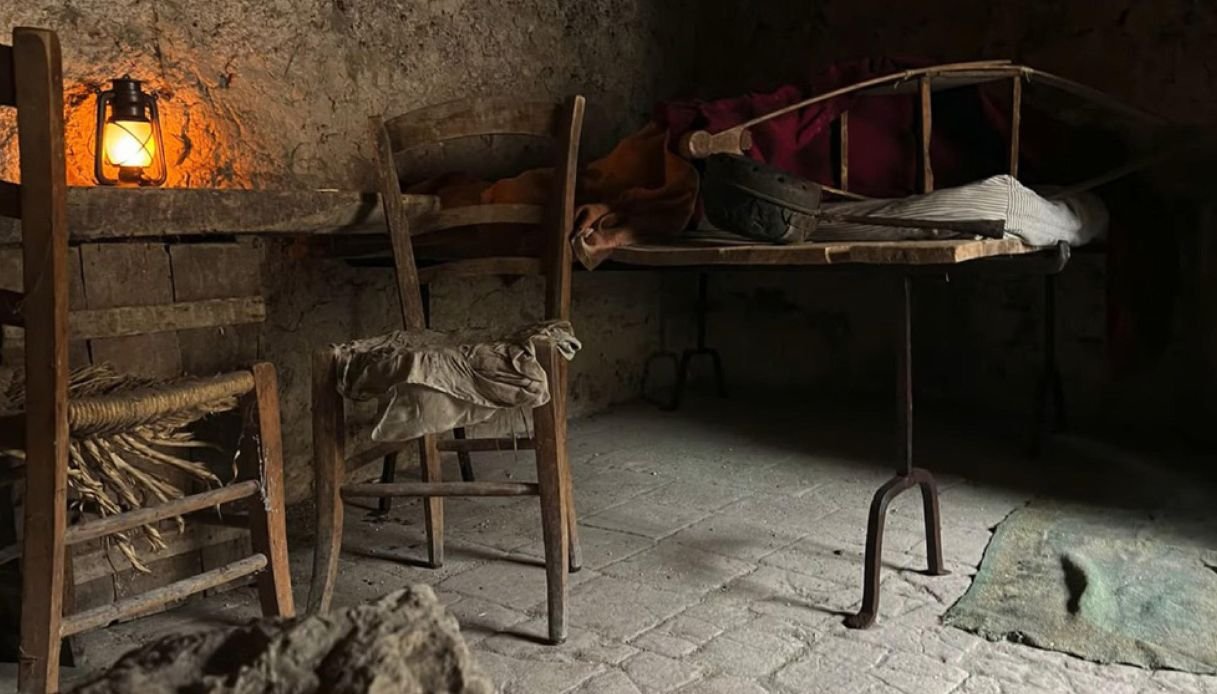A medieval house in the heart of Abruzzo, only 8 square meters: uninhabited for 140 years, it was reopened in June 2024. It is located precisely in Goriano Valli, in the province of L’Aquila. The last to have lived there? A couple, until their disappearance: Rachele Mariani And Pierfelice Capestrani. Its door has, however, been reopened to tell how people once lived: it is a candidate for being the smallest medieval house in the world, but with infinite humanity.
The smallest medieval house in the world in Abruzzo
A Village of Abruzzo houses what is today a jewel of medieval architecture, both small and “great” in its value: in a hamlet of the village of Tione of AbruzzoIn Goriano Valli you can stop the clock and go back in time. After 140 years of last occupation, today it is one of the stations of the MuDi, the most widespread museum of the Sirente-Velino Park.
The last people to have lived here, namely Rachele Mariani and Pierfelice Capestrani, were a couple of farmers, defined as “guardians of a forgotten humanity”, committed since childhood: they were responsible for helping the orphaned children of the Franciscan convent. Observers of Saint-Georgesnear the house. There are few objects and utensils, they all tell the story of life in the past, which seems so far removed from today’s “comfort” and dominant technology.
The creator of MuDi, Fausto Di Giuliohe explained to the Pescara THE concept of the reopening: “When you enter this house, you magically return rural daily life of the past: A Bed made with wooden boards and a straw mattress, a chimneytwo seatsA chest and one conchthat is, objects that tell the story of the daily work of farmers in the service of the local baron. No toilets or running waterThis small domestic structure retains a medieval authenticity that allows visitors to immerse themselves in a distant era.
The interiors of the smallest medieval house in the world
It is difficult to imagine life in the past, at least today, in which we could boast of having increasingly modern, home-automated homes that can communicate with our devices. However, nothing like this medieval house of only 8 square meters offers us a faithful portrait of the way of life in the past: inside there is the essentialand nothing more. There is not even a toilet – unthinkable these days – but its value is inestimable.
There is a bed to sleep and rest after the hard work in the fields. A fireplace, to warm up during the harsh winters, which can be quite harsh in this magical place. Two chairs to sit and eat. A chest, to store the few belongings and keep the environment in order, with dignity. And it is the authenticity that strikes you immediately: the ability, as soon as you cross the threshold, to take us by the hand and lead us to a past thatnot really, Today, we have difficulty imaginingbut which until 140 years ago was the “normality”.
Fausto Di Giulio also explained his intention, which is to preserve the medieval house, but at the same time to inspire others to do the same: “My concern and that of my family is inspire others to do better, moreover And Otherwise inviting those who own historical structures in the Aterno Valley and in the Sirente-Velino Park – such as stables, cellars or haystacks – to recover and protect them pass them on to future generationsoffering the possibility of including them free of charge in the museum itinerary to actively participate in the preservation of local memory”.
How to visit the smallest medieval house in the world
The medieval house is destined to be a chapter in local history: the Diffuso Museum of the Sirente-Velino Park was inaugurated in June 2024. Since then, it has been possible to take a “journey through time” thanks to the museum itinerary, which aims to preserve and protect local history and architecture, also offering a glimpse of the past to future generations. Next to the medieval house, there is a house dating back to 1494. Its interior has been restored Coat of arms of the Marquises Sannesio-Malaspinaa discovery that occurred recently. Inside the MuDi, there is also the Me-to-meTHE CEO Museum for the Future.
“Me-To-Me will be a unique place,” explained Di Giulio. “A treasure chest to treat yourself to precious breaks of disconnection, to reconnect with yourself and with nature, to savour the authenticity of the places of L’Aquila and to carry out the twenty exercises of reflection on the future that help to “remember the future” and “predict the past”. The Di Giulio brothers have chosen to invest in historya true homage to the land of the ancestors. The valorization of the territory is essential, especially in order to safeguard the thousand-year-old peasant culture, today almost extinct in the small villages of Sirente-Velino, where however it was once a reality.
Houses in the Middle Ages
We often talk about villas, such as Villa Fontanelle or Villa Valguarnera, but this house goes far beyond any notion of “habitability”, at least nowadays: it is a real treasure chest. Furthermore, we know that medieval houses were built in drinkusually with factory rectangular – 6 meters by 12 – with sometimes two, three floors, but few rooms. Then, from the 11th-12th century, the first arrived stone houseswith smooth facades free of any decoration.
After all, when you think about medieval buildingsIt is very easy to imagine stone as the first material, much more resistant than wood, but for the most part it is power buildings: the rest of the houses, however, were built with perishable materials, including wood, so little has survived. Very little has survived the passage of timeand that is why this medieval house is a truly priceless treasure, to be seen at least once in your life.
